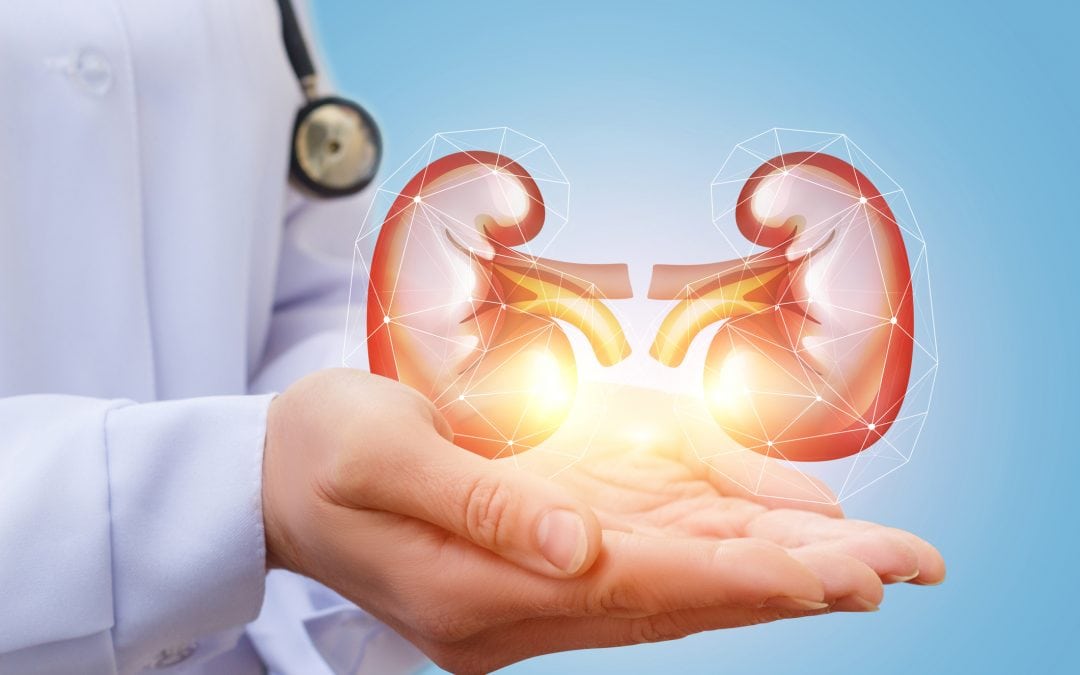Kidney disease affects your body’s ability to cleanse and remove extra water from your bloodstream as well as helps control your blood pressure.
When they lose the ability to perform these functions, waste products, and excess fluid can accumulate in your body.
The accumulation can result in a number of symptoms including:
- Swelled Ankles
- Vomiting
- Weakness
- Sleep Issues
- Shortness of Breath
If the damage is left untreated, it will get worse until the kidneys shut down completely, leading to a life-threatening condition.
If your kidneys stop working properly, your doctor will probably prescribe a specialized diet containing a specific daily amount of certain nutrients. In this article, we’ll take a look at key elements of a proper diet when being treated for kidney disease. We’ll also glance at some of the other dietary concerns you’ll want to be aware of.
The Big Three
When putting together a diet for you, your health provider will take special care to control the amounts of potassium, protein, and sodium consumed daily. Keeping the consumption of these nutrients regulated helps keep kidney disease from progressing.
Potassium
When you are suffering from kidney damage, potassium levels in the bloodstream will become elevated. High potassium levels lead to Heart Arrhythmia.
Arrhythmia is the term used to describe the heart beating out of its normal rhythm.
Potassium is found in many healthy foods so its good to be aware of what can cause over consumption.
Protein
Protein helps build, repair and maintain every cell in your body. It can also be used to supply the cells with energy if required.
However, when kidney damage has occurred, the kidneys can’t handle the processing of a lot of protein.
To maintain energy levels, it will be necessary to consume the right balance of protein, carbs, and fats. This will free up the protein that is consumed for the building, repair, and maintenance the cells will need.
Sodium
Since kidney disease can affect the removal of excess fluids from the bloodstream, sodium regulation is imperative since it can make the body retain water. Too much fluid buildup can affect your lungs, heart, and other critical systems.
Since sodium is found in table salt as well as a lot of processed foods it’s important to check packaging labels for salt content.
High blood pressure can lead to kidney issues…if you suffer from high blood pressure, try this Blood Pressure Support>>>
Other Dietary Concerns for Kidney Disease
Total Calories
Keeping your weight within a healthy range will put less stress on the body.
Phosphorus
Like the other nutrients we’ve mentioned, excess phosphorus can also be harmful to the body. Symptoms of this can include
- Joint and Muscle Pain,
- Muscle weakness
- Itching Red Eyes
Severe levels can result in nausea, diarrhea, vomiting or constipation.
Calcium
Excessive phosphorus levels lower the availability of calcium for bone health. Your diet will need to offer a balance of phosphorus and calcium.
Vitamins and Minerals
Supplements will probably also be recommended to compensate for the limits put on certain foods. They will help maintain levels of B-complex, C, and D vitamins plus iron and zinc while easing the workload your kidneys need to undertake.
Related Article: Blood Pressure: What You Need to Know
Registered Dietitian Nutritionist
If your Doctor doesn’t put together your diet personally, they will probably refer you to a Registered Dietitian Nutritionist (RDN). These professionals are nutrition experts who meet the criteria to earn the RDN qualifications. Minimum qualifications include:
- Bachelor’s Degree – Must be from a US regionally accredited institution or other approved by the Academy of Nutrition and Dietetics.
- Completed an ACEND-accredited supervised practice program
- Passed a National Examination
- Complete Continuing Educational Requirements
RDN’s are specially trained to put together a diet plan that is specific to their client’s health requirements and work with any treatment they are undergoing.




What did you think about this article?